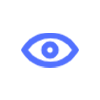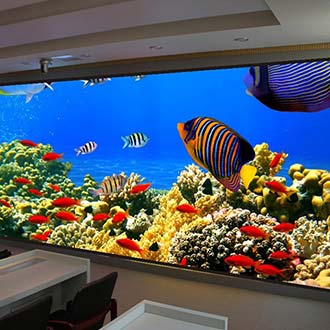JYLED Provides the Best Indoor Solutions
JYLED is a professional factory specializing in fixed indoor LED display screens. Over the years, we have designed various indoor solutions for clients from around the world. Whether it’s straight-fixed, angled-fixed, or ceiling-mounted, we can always design the best indoor solution for you.
JYLED’s high-quality indoor fixed LED display screens conform to international standards and have obtained multiple certifications such as CE, FCC, and RoHS. They boast high contrast, high definition, and easy installation.
Fixed Series Product Show
The outdoor fixed LED display screen is a model specially designed for outdoor use in the fixed series. It features functions like waterproofing and high brightness, making it suitable for long-term outdoor use.
Constructed using 3mm LED modules, this outdoor fixed LED display screen is suitable for close-range viewing. It’s commonly used at transportation hubs as electronic information signs for real-time display of information.
A commonly used model of indoor fixed LED display screen, it offers high clarity. Within a range of over 2 meters, the picture quality remains clear. Therefore, it’s often used in conference rooms, corridors, and lobbies.
Constructed using 2.5mm LED modules, this indoor fixed display screen is slightly larger than P2. Both have similar usage scenarios, but the price may be slightly lower for P2.5 compared to P2.
What are the advantages of indoor fixed displays?

Indoor fixed display can achieve a very small pixel pitch so that the playback screen reaches 4K standard and the picture quality is clearer.

Indoor fixed display using an ultra-light, ultra-thin cabinet can be installed on the wall at will, does not need to spend a lot of manpower and material resources is also a more time-saving installation.

JYLED indoor fixed installation LED display, horizontal viewing angle up to 140 ° – 160 °, which is on the market many LED manufacturers can not reach.

using the latest technology and materials, compared with the traditional LED screen, the power is greatly reduced, more energy-saving and environmentally friendly, and the service life is getting longer and longer.
- Gallery
- Product Parameter
- Product Document
| Recommended Models | |||
| Model | P2.5 | P3 | P4 |
| Module size(mm) | 320×160 | 192×192 | 320×160 |
| Module resolution (dot) | 128×64 | 64×64 | 80×40 |
| Scanning | 1/32S | 1/16S | 1/20S |
| SMD | 1G1R1B | ||
| Maintenance | Front | Front/Back | Front/Back |
| Installation | Front/Back | Front/Back | Front/Back |
| Cabinet size(mm) | 960×960 | 960×960 | 960×960 |
| Density(dot/㎡) | 160000 | 111111 | 62500 |
| Brightness(cd/㎡) | 800-1200 | ||
| Max. Power Consumption(W) | 600 | 1000 | 900 |
| Average Power Consumption(W) | 200 | 350 | 300 |
| Cabinet weight (kg) | 18kg | ||
| Cabinet material | Iron | ||
| IP rate | IP 31 | ||
| Grayscale | 10000:1 | ||
| Refresh rate(hz) | 1920-3840 | ||
| Frame change frequency | 50/60hz | ||
| Horizontal viewing angle | >140° | ||
| Vertical viewing angle | >140° | ||
| Best viewing distance | >2.5m | >3m | >4m |
| Input Voltage | AC110V – AC220V | ||
| Module Max. current | 4.0-5.0 | 4.5-5.5 | 5.5-7.5 |
| Temperature-operating | ﹣10℃~60℃ | ||
| Humidity-operating | 10%~90% | ||
| Life span (H) | ≥100,000 | ||
The main differences lie in waterproofing and brightness. Outdoor fixed LED display screens need good waterproofing; otherwise, they may be damaged by rainwater, leading to screen failure.
There are many models of indoor fixed LED display screens, and the optimal viewing distance varies for different models. For example, the optimal viewing distance for a P2 indoor fixed LED display screen is 2-4 meters, while for a P2.5 indoor fixed LED display screen, it’s 2-5 meters. Therefore, the best viewing distance depends on the model chosen.
Important parameters of indoor fixed LED display screens include:
Model: Different models have different optimal viewing distances.
Brightness: Generally, indoor brightness is not high, but different brightness levels may result in slight price differences.
Scene: Prices may vary for flat scenes and scenes with corners.
The maximum brightness of JYLED indoor fixed LED display screens is 1800 nits. If higher brightness is needed indoors, outdoor fixed LED display screens can be considered. However, we do not recommend using excessively bright screens indoors to avoid discomfort to the eyes.
Firstly, indoor fixed LED display screens have lower power consumption and support seamless splicing. Therefore, when dealing with larger screens, indoor fixed LED display screens are usually preferred over indoor fixed LCDs.














